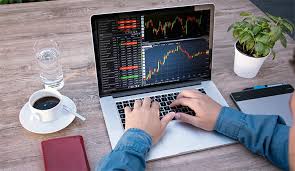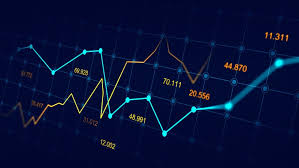trading13

What is a Pip in Trading?
A pip, short for «percentage in point,» is a term frequently used in the trading world, especially when it comes to Forex (foreign exchange) trading. It represents the smallest price movement that can occur in the exchange rates of currency pairs. In the context of Forex, a pip is usually a change in the fourth decimal place of a currency quote. For instance, if the EUR/USD pair moves from 1.1050 to 1.1051, that 0.0001 USD move is one pip. To delve deeper into this term and its implications on your trading strategy, continue reading this guide on what is a pip in forex trading Trading Connexion.
The Importance of Pips in Forex Trading
Understanding what a pip is and how it affects your trading is crucial for both novice and experienced traders. Pips play a vital role in determining profit and loss, influencing trading strategies, and understanding market volatility. Here are several reasons why pips matter in Forex trading:
- Measurement of Price Movements: Pips serve as a standard unit for measuring price changes in the Forex markets. This standardization allows traders to evaluate their trades and performance accurately.
- Impact on Profit and Loss: Since currency pairs are quoted in pips, traders use this measurement to calculate their potential gains or losses. A basic understanding of how many pips the currency pair has moved is essential for effective risk management.
- Ease of Communication: In the world of Forex trading, traders often discuss the market in terms of pips. Using this common language allows for effective communication between traders, brokers, and analysts.
Calculating Pips in Currency Pairs
The calculation of pips can vary based on the currency pair you are trading. Most currency pairs are measured to four decimal places, and a pip will generally be the last decimal place. However, if you are trading pairs involving the Japanese Yen (JPY), the pip measurement is limited to two decimal places. Here’s an example:
For the currency pair EUR/JPY, if the price moves from 120.50 to 120.51, that movement of 0.01 is one pip. Conversely, for EUR/USD, a movement from 1.1050 to 1.1051 is one pip.
Pip Value and Its Calculation

The value of a pip can vary depending on the size of your trade and the currency pair you are dealing with. For standard lots (100,000 units), the value of a pip is typically $10. For mini lots (10,000 units), it’s $1, and for micro lots (1,000 units), it’s $0.10. The simplified formula to calculate the pip value is as follows:
Pip Value = (1 pip / Exchange Rate) x Lot Size
For instance, if you are trading one standard lot (100,000) of EUR/USD, and the exchange rate is 1.1050, the pip value would be:
Value = (0.0001 / 1.1050) x 100,000 = $9.05 approximately.
Understanding Pips in Different Trading Styles
Different trading styles use pips in varying manners depending on how traders choose to approach the market. Here are a few common trading styles and their relationship with pips:
- Day Trading: Day traders typically look for small pip movements. Their aim is to extract profits from minor price changes within the same trading day.
- Swing Trading: Swing traders seek to capitalize on price changes over a few days or weeks. They usually look for larger pip movements compared to day traders.
- Scalping: Scalpers focus on making numerous trades throughout the day, capturing tiny pip moves. This strategy requires precision and rapid decision-making.
Pips and Market Volatility
Market volatility is another essential factor when considering pips. High volatility means prices can change rapidly, which results in larger pip movements. Conversely, low volatility may lead to fewer pip movements. Traders need to be aware of volatility levels when trading, as they can significantly impact their pip profit targets and stop-loss levels.
Conclusion
Understanding what a pip is in Forex trading is fundamental to navigating the currency markets effectively. A pip, while representing a small price movement, plays a critical role in measuring risk, calculating profits or losses, and establishing effective trading strategies. By grasping how pips work in currency trading, traders can enhance their decision-making abilities, ultimately leading to more profitable trading endeavors.

Understanding Margin in Forex Trading: A Comprehensive Guide
In the world of Forex trading, the term «margin» is crucial for any trader to comprehend. Margin represents the amount of capital required to open and maintain a leveraged trading position. The Forex market is notable for its high leverage, enabling traders to control large positions with a relatively small amount of invested capital. For more in-depth insights into trading and financial strategies, you can visit what is margin in forex trading https://trading-connexion.com/.
What is Margin?
Margin in Forex trading is essentially a good faith deposit required to open a leveraged trading position. It acts as a security deposit that ensures that traders can cover potential losses. Margin is not a cost, but rather a portion of your trading account equity that is set aside when you open a position. It’s important to distinguish between margin, collateral, and the actual amount of money you have in your trading account.
Types of Margin
There are two main types of margin in Forex trading: initial margin and maintenance margin.
- Initial Margin: This is the amount of money required to open a position with leverage. For instance, if you want to control a position worth $100,000 with a leverage of 100:1, your initial margin requirement would be $1,000.
- Maintenance Margin: This is the minimum amount of margin that must be maintained in your trading account to keep your position open. If your account equity falls below this level due to losses, you will receive a margin call and may be required to deposit additional funds or close your positions.
How Margin Works in Forex Trading
When you enter a trade, your broker calculates the margin requirement based on the size of the trade and the leverage being offered. Here is how the margin calculation works:
- Margin Requirement: This is typically expressed as a percentage. For example, a margin requirement of 1% means you need to deposit $1,000 to control a $100,000 position.
- Leverage: In Forex, leverage allows traders to control larger positions than their account balance would permit. Common leverage ratios range from 50:1 to 500:1, but traders should be mindful that higher leverage increases both potential profits and risks.

The Relationship Between Margin and Leverage
Margin and leverage are directly intertwined; understanding both is vital for successful trading. Leverage amplifies both your potential gains and your potential losses.
To illustrate, let’s say you have a trading account with $1,000 and you are using a leverage of 100:1. This means you can control a position worth $100,000. If the trade moves in your favor by just a few pips, your gains can be substantial due to the higher position size. Conversely, if the market moves against you, losses can also be significant, potentially leading to a margin call.
Margin Call: An Important Concept to Understand
A margin call occurs when your account equity falls below the required maintenance margin. When this happens, brokers generally notify you and may require you to either deposit additional funds to restore your margin level or reduce the size of your open positions. Ignoring a margin call can lead to automatic liquidation of your positions, which can result in significant losses.
Managing Margin Effectively
Proper margin management is an essential skill for Forex traders. Here are several strategies to effectively manage margin:
- Know Your Risk Tolerance: Understanding how much you are willing to risk will help you determine your position sizes and margin requirements.
- Use Stop-Loss Orders: Implementing stop-loss orders can help minimize potential losses and avoid margin calls.
- Keep an Eye on Leverage: While it’s tempting to use high leverage, doing so increases your risk. It is often more prudent to use a lower leverage ratio and trade larger amounts of capital over time.
- Diversify Your Portfolio: Consider spreading your investments across various currency pairs to decrease your overall risk.
Conclusion
Margin is a foundational aspect of Forex trading that every trader must understand. It not only determines how much capital you need to trade but also influences your overall risk management strategy. By mastering the concept of margin and leveraging it according to your trading style and risk tolerance, you can enhance your trading performance significantly. Always educate yourself, stay updated, and consider using reliable resources to improve your trading strategies.
As you embark on your Forex trading journey, remember that understanding margin will help you navigate the complexities of the market more effectively. Good luck and happy trading!
